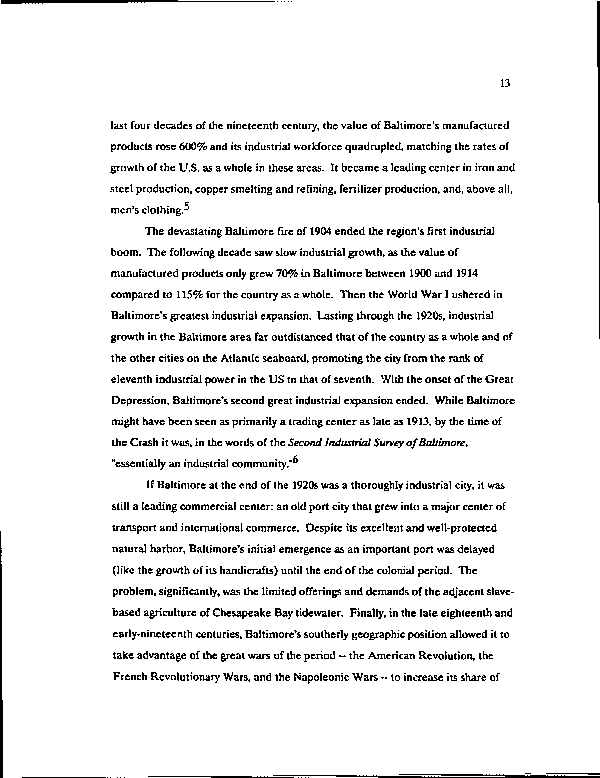|
13
last four decades of the nineteenth century, the value of Baltimore's manufactured
products rose 600% and its industrial workforce quadrupled, matching the rates of
growth of the U.S. as a whole in these areas. It became a leading center in iron and
steel production, copper smelting and refining, fertilizer production, and, above all,
men's clothing.-*
The devastating Baltimore fire of 1904 ended the region's first industrial
boom. The following decade saw slow industrial growth, as the value of
manufactured products only grew 70% in Baltimore between 1900 and 1914
compared to 115% for the country as a whole. Then the World War I ushered in
Baltimore's greatest industrial expansion. Lasting through the 1920s, industrial
growth in the Baltimore area far outdistanced that of the country as a whole and of
the other cities on the Atlantic seaboard, promoting the city from the rank of
eleventh industrial power in the US to that of seventh. With the onset of the Great
Depression, Baltimore's second great industrial expansion ended. While Baltimore
might have been seen as primarily a trading center as late as 1913, by the time of
the Crash it was, in the words of the Second Industrial Survey of Baltimore,
"essentially an industrial community.""
If Baltimore at the end of the 1920s was a thoroughly industrial city, it was
still a leading commercial center: an old port city that grew into a major center of
transport and international commerce. Despite its excellent and well-protected
natural harbor, Baltimore's initial emergence as an important port was delayed
(like the growth of its handicrafts) until the end of the colonial period. The
problem, significantly, was the limited offerings and demands of the adjacent slave-
based agriculture of Chesapeake Bay tidewater. Finally, in the late eighteenth and
early-nineteenth centuries, Baltimore's southerly geographic position allowed it to
take advantage of the great wars of the period - the American Revolution, the
French Revolutionary Wars, and the Napoleonic Wars - to increase its share of
|

